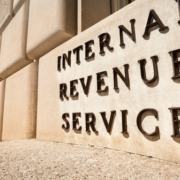Full-Service Contractor Completes Energy-Reducing Project in California Schools
Embracing energy-efficient, greener working processes plays a crucial role in combating carbon footprints for businesses, organizations, and educational institutions across the States. Now, California schools have adopted an impressive new eco-friendly scheme to reduce the impact their everyday operations have on the environment.
In November 2012, voters in California approved two measures to handle better the state’s financial problems. Proposition 30 boosted high-earners’ income tax for seven years and raised the sales tax by a quarter of a cent for the next four years. Proposition 39, on the other hand, closed a tax loophole (which had benefited corporations outside the state), which had been costing California approximately $1 billion per year. Prop 39 dictated that the recovered revenue be used to undertake energy-efficiency projects within public buildings, and it is within this scheme that the contractor operated.
Caring for Tomorrow’s World
K-12 schools in California spend around $700 million (estimated) per year on their energy: heating, lighting, and cooling these buildings demands the same amount typically spent on supplies and books. Prop 39 has freed-up the funds to ensure schools are embracing a more eco-friendly energy-generating process to lower costs and reduce carbon emissions across the state: newer, more effective technologies will also contribute to a more comfortable teaching/learning environment for faculty and students alike.
One full-service facility contractor undertook work on numerous schools in California and had since helped to make a huge impact on these institutions’ carbon emissions. How did they do this? By focusing on lighting retrofits, mechanical system upgrades, and new photovoltaic systems.
Lighting Retrofits
The California Lighting Technology Center has made recommendations for schools looking to reduce their energy-related expenses, and these changes were implemented by the contractor – this helped to make a significant impact on 27 schools across the state.
Replacing older T8 fluorescent lighting with newer, more efficient lights with dimming controls was one recommendation – particularly, LED lights are seen as a key improvement. Not only are these easy to control, but they can also be combined in almost any shape to create high illumination in specific areas.
Creating bigger windows and skylights is also useful for reducing emissions: harvesting daylight makes the most of natural lighting, reducing the need to use electric lights as often (or at all). Occupancy-sensing controls on lights in certain areas which see intermittent use (toilets, gyms, particular offices) reduces the amount of energy wasted, contributing to overall savings.
Mechanical System Upgrades
Upgrading mechanical systems was a critical part of making schools more energy-efficient, as many newer units are made to be as eco-friendly as possible. Buildings using outdated systems that devour excessive amounts of electricity – either through a lack of funding or just a lack of interest – are costing themselves far more than they need to.
New Photovoltaic Systems
Using PV systems to generate power via solar panels is increasingly popular, and with schools in sunny California now implementing them, costs can be cut significantly. This was a large part of the project, with panels, inverters (changing currents from DC to AC), cabling, and more installed.
What Impact has this Made?
The contractors’ work has created substantial savings for schools in California, contributing to significant 179D deductions. What is 179D? This provision dictates that an amount of money will be deducted equally to the cost of the energy-efficient property being used or up to $1.80 per square foot, in the taxable year.
Schools that underwent work to improve their ‘green’ status included the Antelope School, Big Creek Elementary School, Bonsall Unified School, Central Unified School, and Chowchilla Unition High School. Each of these has some buildings in their district: 2, 1, 3, 21, and 1 respectively, and this variation in scale has created a wide range of 179D deductions.
The highest deductions belonged to: the Madera Unified School District, with $2,784,110; the Central Unified School District, with $1,692,095; the Delano Union School District, with $1,417, 066; the Cotati-Rohnert Park Unified School District, with $1,233,220; the Mojave Unified School District, with $505,325; and the John Swett Unified School District, with $524,120.
The energy savings will help the schools to have less of an impact on their surrounding environments, reduce their carbon footprint, and channel savings towards a variety of supplies & facilities.










